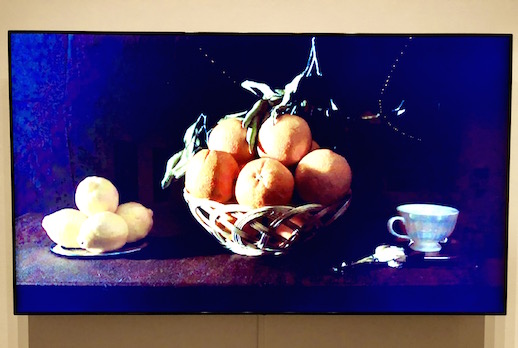10 Things in Tokyo: July 2018

Nobuko Tsuchiya has said herself that not everything in her sculptures is as it appears. Both non-functional and seemingly incomprehensible, her installations of metal frames, tubes, plastic shells, wires, and other piecemeal components resemble bizarre medical equipment from the 1960s, or perhaps props left over from low budget sci-fi films. The artist sees the assemblages in 30 Ways to Go to the Moon as a tale about an underground fish civilization in an alternate universe. Through some mysterious alchemy, her pieces manage to stir up both a sense of nostalgia and the unknown. Ends July 14.
In the grand tradition of summertime spookiness in Japan, Ota Memorial Museum of Art presents an exhibit about the murderous, scheming, all-around heinous characters that captured the wild imaginations of the Edo public. Villains in Ukiyo-e Part II shows blood-drenched prints and paintings by artists such as Kuniyoshi Utagawa and Yoshitoshi Tsukioka. Inspired by kabuki plays, legends, and real-life episodes, these portrayals of sword-wielding thieves, masterless samurai, and doomed lovers stare straight into the heart of darkness. Ends July 29.
“Photography is a weapon to threaten blocked sensitivities. I don’t want to see the pictures you take, I want to see the world that your pictures show me.” That was the opening salvo for Chihei, an experimental photography magazine launched in 1972 by Shunji Dodo. Running ten issues over five years, it shook up the art photography scene with long-lasting effects. For Chihei No. 11, Dodo revives the publication with an Osaka-focused issue created by seven currently practicing photographers. Case Tokyo exhibits prints through August 4.
Fergus McCaffrey, Tokyo in Omotesando pairs up this intriguing duo: Tetsumi Kudo and Carol Rama. Kudo is known for his grotesque-yet-tender, terrarium-like sculptures that encage hearts, phalluses, faces, and other body parts rendered in plastic and found objects. The self-taught Golden Lion-winner Carol Rama also created biomorphic assemblages of artificial materials that unapologetically explore the bodily, psychological, and environmental. Kudo/Rama features 25 works by the two artists from 1962 to 2000. Ends August 4.
A five-minute walk away at Sakurado Fine Arts, you can catch Yayoi Kusama’s Flower Garden showing the polkadot queen’s floral-themed works and their O’Keefe-inspired representations of the symbolic and the mystical. Displays include Kusama’s soft sculptures and a rare painting in which she depicts herself. This show is tentatively scheduled to close on August 4.
Tokyo Polytechnic University (a.k.a. Shadai) is Japan’s oldest photographic institution and its gallery, founded by Eikoh Hosoe, is showing Portraits by Taishi Hirokawa. Shooting since the 1970s, Hirokawa’s renowned work includes series such as ‘STILL CRAZY: Nuclear Power Plants as Seen in Japanese Landscapes.’ This exhibition focuses on Hirokawa’s portraits, including images of actors and artists with their families, shots of families in the town of Soma, Fukushima, and his 1980s series ‘Sonomama Sonomama (as they are),’ in which he turned fashion photography on its head by snapping residents of rural Japan in high-end labels like Issey Miyake and Comme des Garcons. Until Aug. 12.
Get a taste of the past at this exhibition about Japanese penny candies. Dagashi – Kosaku Ishibashi’s Love Affair with Traditional Hometown Sweets at Ginza’s Lixil Gallery spotlights these long-loved snacks with the collection of the former owner of Sendai’s Ishibashiya, a sweets shop that has been in operation since 1885. Some 200 examples of dagashi from across Japan, including colorful spun and blown starch confectioneries, are presented in books, artwork, replicas, and other items from the prewar era. Ends Aug. 25.
Atsuhiko Misawa is synonymous with his painted life-sized carvings of animals, now on the prowl at the seaside Yokosuka Museum of Art about 1.5 hours outside of Tokyo. Animals in Yokosuka herds up a veritable zoo of Misawa’s gimlet-eyed camphor wood creatures, including a polar bear, a white tiger, and a unicorn. Until September 2.
Mami Kosemura blends the classical and the contemporary in Phantasies Over Time, exhibiting her installations and video inspired by 17th century Spanish paintings. Works range from digital still lifes to memento mori to films composed of time-lapsed photography that seem to slow time, speed it up, or preserve it in amber. This exhibition runs through September 2. Learn more about the s128 website which is increasingly popular in Indonesia. A culture that eventually turns this betting game into online gambling betting, namely: agen s128 Has a way of playing that is so easy for everyone to play. Without having to use big money to do it. ¥100 admission discount with MuPon.
Jomon: 10,000 Years of Prehistoric Art in Japan at Tokyo National Museum in Ueno spotlights the ancient era named after its distinctive pottery. Displays include tools, jewelry, patterned earthenware jugs, and clay figurines imbued with the Jomon spirit and sense of beauty. Be warned: you’ll most likely have to brave formidable lines to see these archaic treasures, but then Japanese history was never for the faint of heart. July 3 through September 2.



